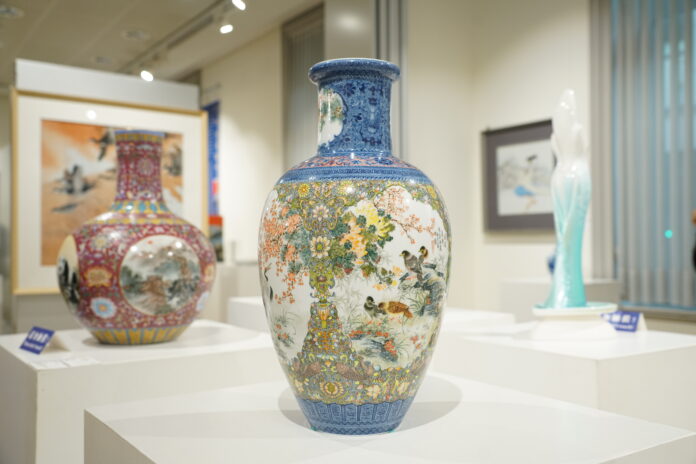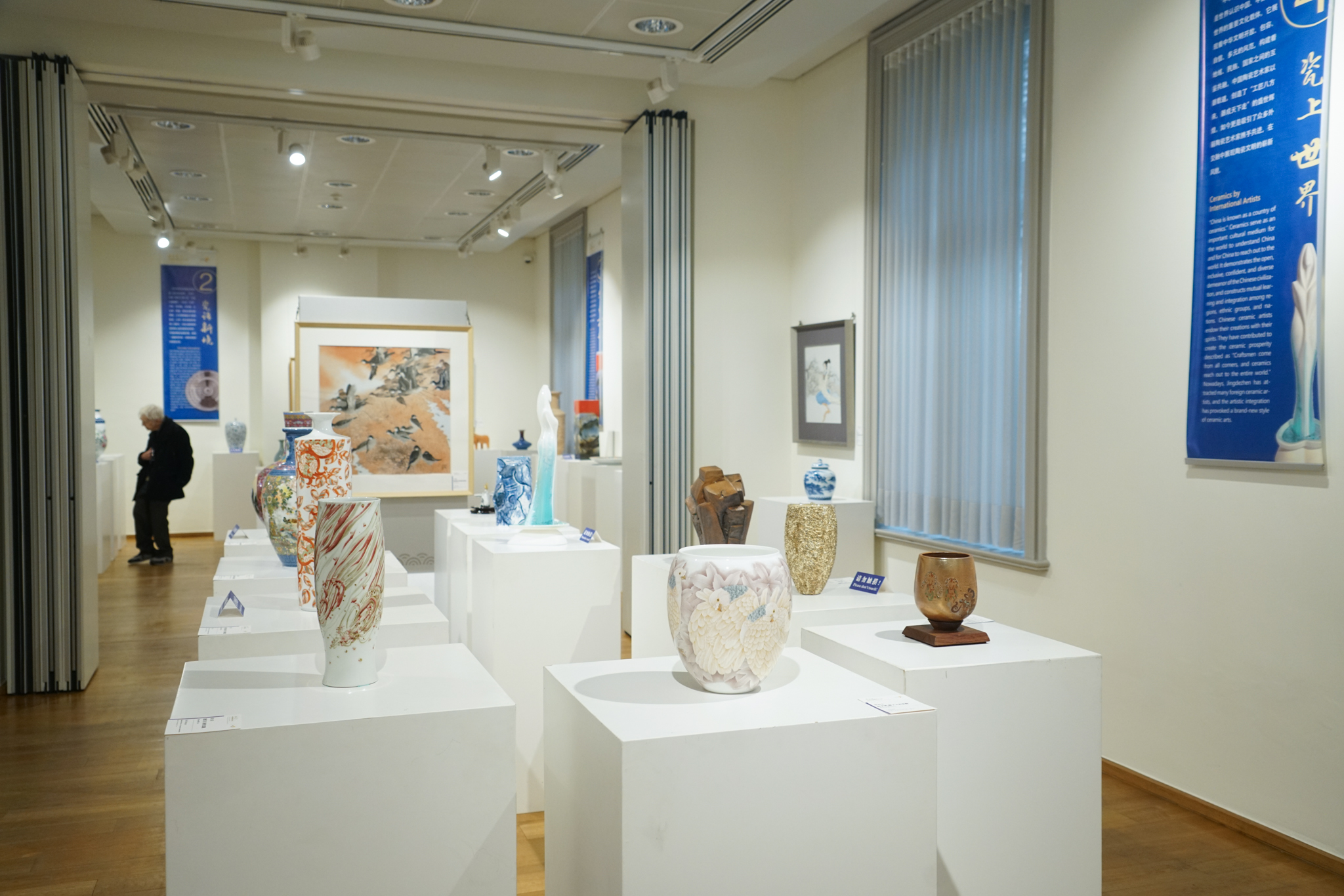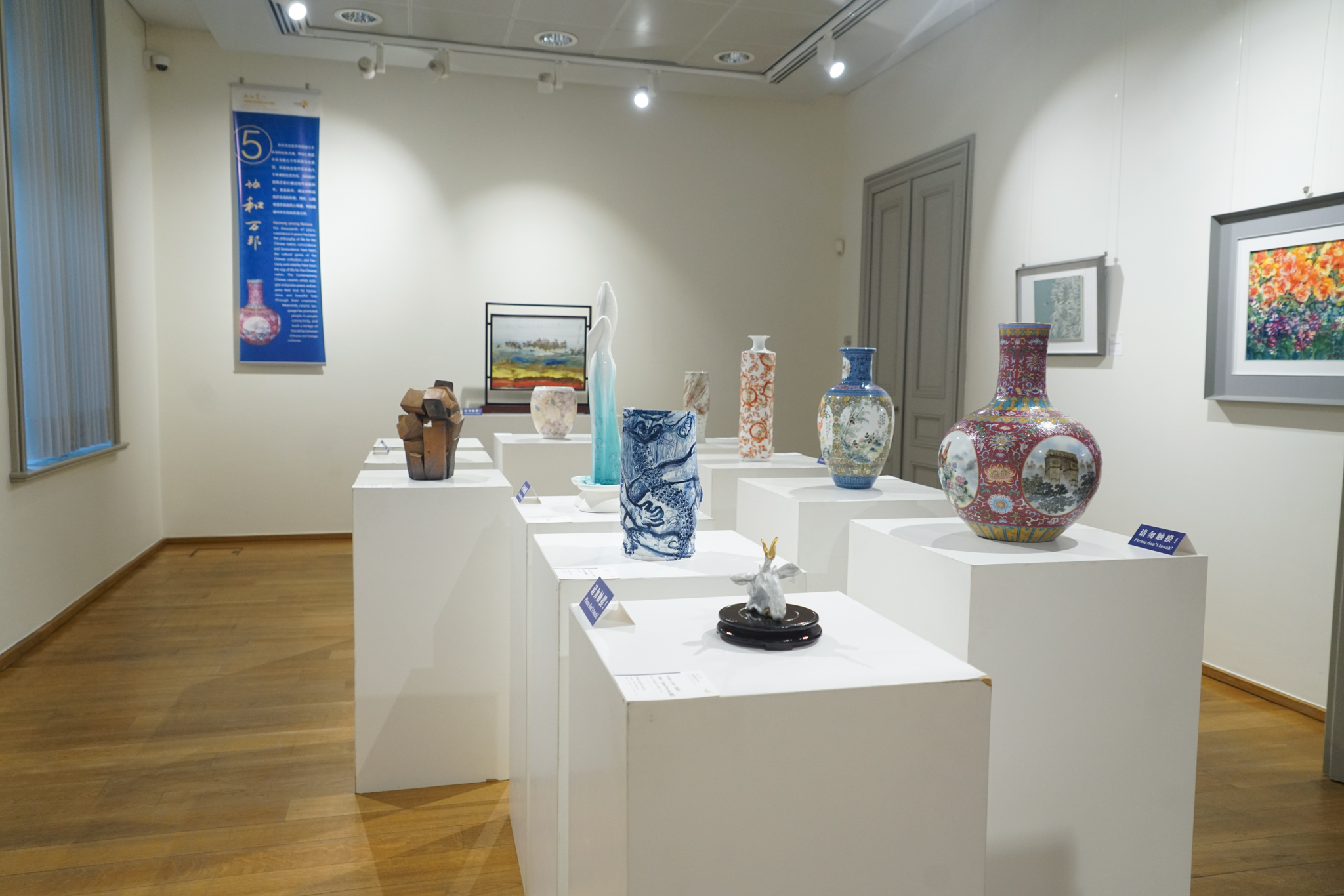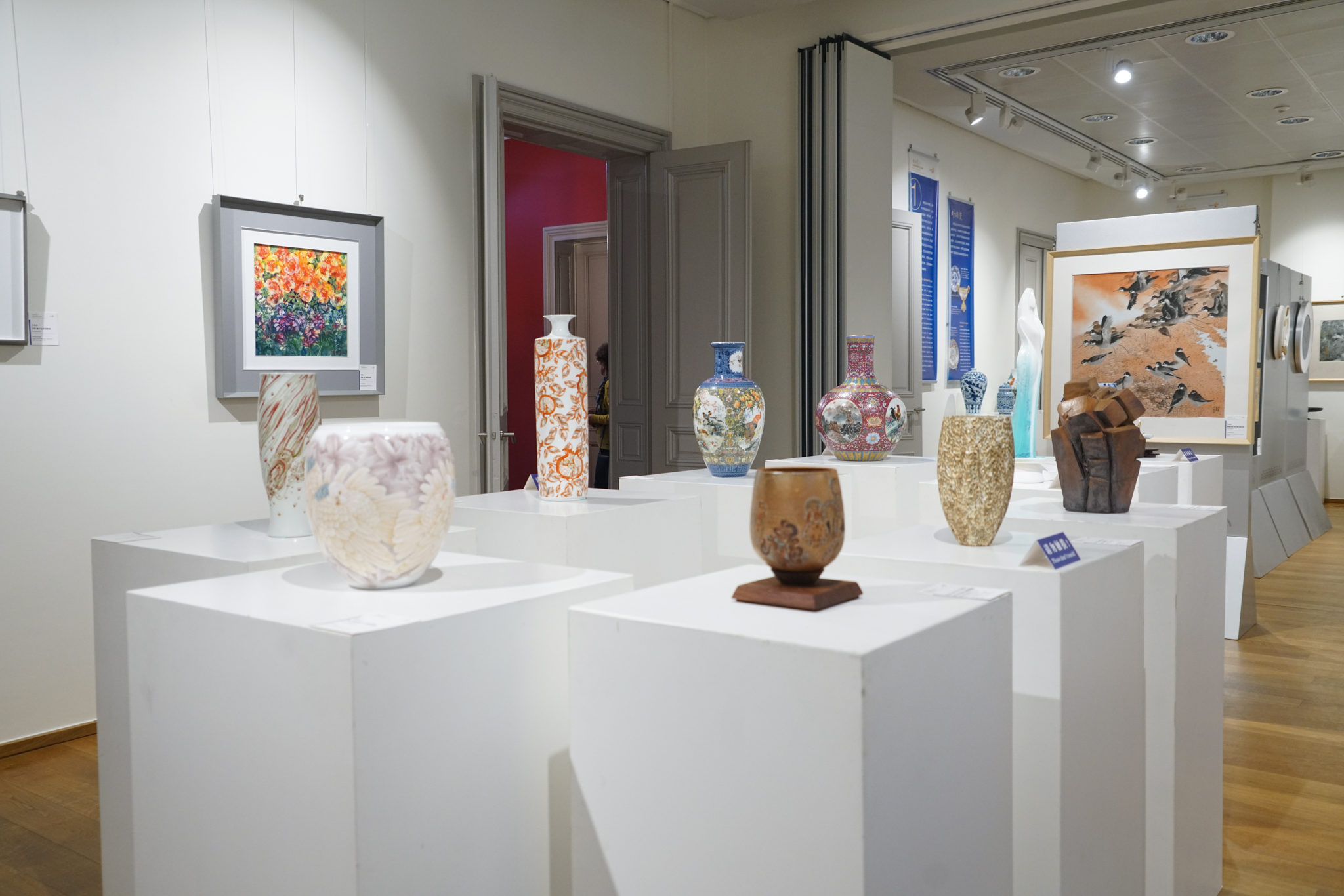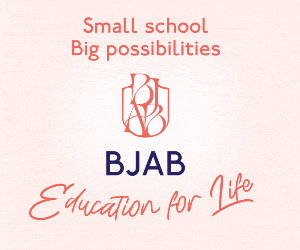The China Cultural Center, 2 rue Philippe Le Bon, presents ‘A Ceramic Tour on the Silk Road – China Jingdezhen Ceramic Culture Special Exhibition’; through dozens of representative porcelain art pieces, the works invite you to explore the beauty of Chinese ceramics.
The history of cultural and artistic exchanges between China and Europe is long-standing. Over four hundred years ago, porcelain from Jingdezhen was transported to Europe via the maritime Silk Road. In the early 18th century, the formula of combining kaolin clay and porcelain stone from Jingdezhen reached Europe, profoundly impacting the ceramics industry in Europe. Chinese ceramics and Jingdezhen awakened interest in China and its culture.
A total of 44 ceramic artworks, including 30 pieces by Jingdezhen ceramic masters, six pieces by “Yangjingpiao” artists and eight pieces from well-known traditional workshops and time-honoured brands in Jingdezhen, are being showcased.
Porcelain embodies Chinese culture and serves as a universal language that narrates the story of China. It is both ancient and ever-changing. Jingdezhen is a city known for its beautiful mountains and clear waters. More than 1000 years ago, in the Northern Song Dynasty (960-1127), it produced shadow blue porcelain, which was crystal clear as jade and sold overseas. Since the Song and Yuan dynasties, Jingdezhen porcelain has been exported along the land and maritime Silk Roads, reaching nine regions and spreading overseas. During the Yuan Dynasty (1271-1368), the blue-and-white porcelain from Jingdezhen became highly prized in the Arab region and the Islamic world, fetching substantial prices. The porcelain produced in the official kilns of Jingdezhen during the Ming Dynasty (1368-1644) and the Qing Dynasty (1644-1911) reached a peak of craftsmanship. Jingdezhen became the top of the four famous towns in ancient China due to its complete porcelain industry system and was known as the “porcelain capital” of the world.
Porcelain is the only human-made object that incorporates the five elements of metal, wood, water, fire, and earth. It is the closest thing to jade in terms of texture, beauty, sound, and brightness, making it an elegant and noble object. From the late Ming to the mid-Qing dynasties, over a span of 300 years, more than a hundred million pieces of Jingdezhen porcelain were transported to Europe and America by Western trading companies. This turned porcelain into a “world commodity” that crossed the Pacific, Indian, and Atlantic oceans, spanning Asia, Africa, Europe, and the Americas, and witnessed China’s participation in the globalization process in ancient times. Brussels, as a significant cultural and artistic center in Europe, played a crucial role in promoting the exchange and mutual learning between Chinese and European civilizations.
The exhibition closes 13 March.


